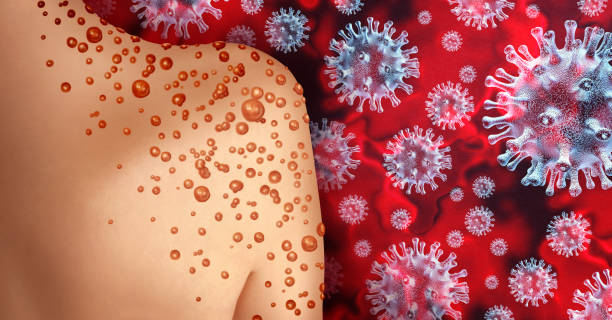Virus
What is Monkeypox Virus? | Vitabase Health
The monkeypox virus causes monkeypox, an uncommon condition that resembles smallpox. Although it has been spotted elsewhere in the world, it is primarily prevalent in parts of Africa. It results in symptoms that resemble the flu, including fever, chills, and a rash that might take weeks to go away. Monkeypox has no known cure, however, it typically goes away on its own.
What is Monkeypox Virus?
The monkeypox virus is a rare disease known as monkeypox. It causes flu-like symptoms and a rash. It belongs to the orthopoxvirus family, just as the more well-known virus that causes smallpox.
Two outbreaks of a disease resembling the pox in groups of monkeys used for a study led to the discovery of monkeypox in 1958. Although skin-to-skin contact with an infected person can occasionally spread the disease, rodent interaction with infected humans accounts for the majority of its transmission. The monkeypox virus has two distinct kinds (clades), one of which originated in Central Africa and the other in West Africa. The less dangerous West African clade is the origin of the current global pandemic (2022).
Where else can one find monkeypox?
Monkeypox was primarily observed in Africa for many years. It does, however, occasionally appear in other nations, such as the United States. The United States experienced the first monkeypox outbreak outside of Africa in the spring of 2003. Texas received a consignment from Ghana with diseased animals. The virus was transmitted by the sick rodents to domesticated prairie dogs, which ultimately infected 47 people in the Midwest.
Viruses that were formerly largely confined to certain regions can more easily spread worldwide as international travel becomes more widespread. Monkeypox was discovered in a resident of the United States who had come to the country from Nigeria in the summer of 2021. Then, in 2022, infections spread to places like Europe, the Americas, and Australia that weren’t in Africa.
What symptoms and indicators are associated with monkeypox?
It could take days or even weeks after exposure before you experience symptoms. Early indications of monkeypox include symptoms similar to the flu-like:
- Fever.
- Chills.
- Headache.
- Muscle pain.
- Fatigue.
- lymph nodes with swelling.
A rash frequently appears a few days later. The rash initially appears as unpleasant, flat, red pimples. These lumps develop into blisters that ooze pus. The blisters eventually dry out and peel off; the entire process can take two to four weeks. Additionally, ulcers in the mouth, vagina, or anus are possible.
Not every monkeypox patient experiences every symptom. In fact, many cases in the current (2022) outbreak aren’t exhibiting the typical constellation of symptoms. Only a few lesions, no enlarged lymph nodes, a lower fever, and fewer additional symptoms of sickness are present in this unusual presentation. You may possess it without realising it. However, even if you don’t exhibit many symptoms of an infection, you can still infect others through extended close contact.
How is monkeypox spread?
When you come into contact with an animal or a person who is infected with the virus, you could develop monkeypox. Animals can transmit diseases to people by biting or scratching people, or by coming into direct touch with their blood, bodily fluids, or lesions from an affected animal (sores).
Although less frequent, monkeypox can spread from person to person. When you come into contact with the sores, scabs, respiratory droplets, or oral secretions of an infected person, person-to-person spread (also known as transmission) happens. This typically happens through close, personal circumstances like hugging, kissing, or intercourse. Although the study is ongoing, it is unclear if the virus is spread through semen or vaginal fluids.
Additionally, you can contract monkeypox by touching recently contaminated items like bedding, clothing, and other linens that were used by an animal or person who has the disease.
How is the monkey pox identified?
Due to the rarity of monkeypox, your healthcare professional could initially identify measles or chickenpox as the origin of your outbreak. However, enlarged lymph nodes typically set monkeypox apart from other poxes.
Your healthcare provider collects tissue from an open sore to diagnose monkeypox (lesion). After that, a lab performs polymerase chain reaction (PCR) testing on it (genetic fingerprinting). Additionally, a blood sample may be required to check for the monkeypox virus or antibodies your immune system produces against it.
Can monkeypox be cured?
Symptoms of monkeypox can continue for two to four weeks and are typically self-limiting. Monkeypox typically resolves on its own without medical intervention. After a diagnosis, your doctor will keep an eye on your health, try to alleviate your symptoms, prevent dehydration, and administer antibiotics to treat any developing secondary bacterial infections.
Monkeypox does not currently have an approved antiviral therapy. Although they haven’t been researched as a monkeypox treatment, antiviral medications may be helpful. There are a number of investigational antivirals with activity against monkeypox, but they can only be obtained through a research study.


